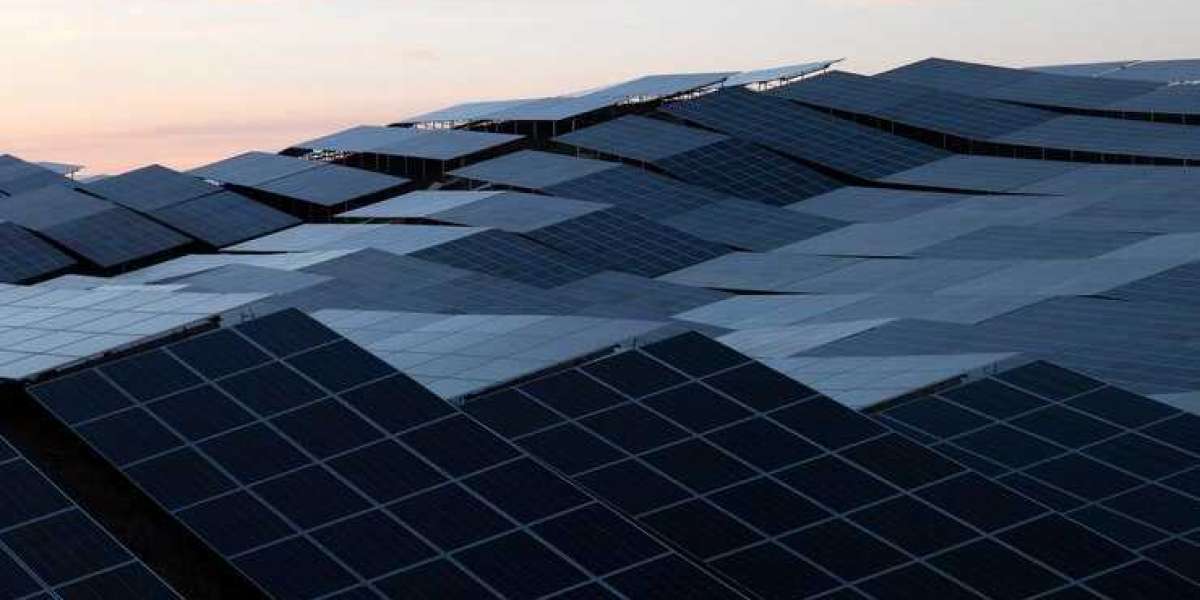In the quest to reach the highest efficiency of solar cells, a particular material is increasingly gaining prominence - perovskites. The name is derived from the natural calcium titanate mineral, the perovskite structure has attracted the interest of scientists across the globe mostly because of its distinctive features and its potential to change the solar industry. It is possible to produce solar cells smaller and less efficient than silicon cells Perovskites may be the future of records for solar cells efficiency record.
What Are Perovskites?
Perovskites are a group of compounds that share the same crystal structure identified with the mathematical formula ABX3. For photovoltaic cells, the most frequently researched perovskites include lead halide perovskites. both the B and A sites are mostly filled with organic and inorganic Ions, respectively. the X ion is a halide. The flexible nature of the structure permits perovskites to be adapted for a variety of optical properties, which makes them extremely versatile for photovoltaics. Perovskites have now become the focus of many research due to their capacity to absorb light in the entire spectrum, and also generate the highest amount of electrons.
The Rise of Perovskite Solar Cells
Solar cells made of perovskite (PSCs) have experienced a remarkable journey since their initial application for photovoltaics back in 2009 which saw efficiencies of less than 3 percent. But recent advances are bringing perovskite solar cells exceeding the 25 percent efficiency threshold which is in line with established silicon technology. The dramatic increase in efficiency in a relatively short time frame has attracted a significant amount of attention in both the academic and industrial sectors as well as the possibility for perovskites to be an efficient and effective solar device currently on the market.
How Perovskites Compare to Silicon Solar Cells
Silicon has been at the heart of solar technology over the past decades and has achieved large efficiencies as well as widespread acceptance. The silicon solar cells are at the point of saturation in effectiveness, with the highest commercial silicon cells having between 26% and 26. Perovskites, on one side, have been breaking new records and are showing no sign of decreasing efficiency. Furthermore, perovskites can be manufactured at lower temperatures than silicon which means that they can be made cheaper and lower energy-intensive manufacturing techniques. As technology advances perovskite solar cells may provide higher efficiency than silicon-based cells, at only a tiny fraction of the price.
The Promise of Tandem Solar Cells
The most intriguing use of perovskites is in tandem solar cells. These incorporate two or more substances to take advantage of different regions of the spectrum. Combining silicon and perovskite in tandem cells is the most popular using silicon to absorb infrared light and perovskites to absorption of visible light. By stacking the two substances, researchers have gotten a tandem efficiency of 29%. They have also surpassed the theoretical limit for efficiency for single-junction silicon cells. Tandem solar cells can open the way to solar panels that boast significantly greater efficiency than the current technologies.
Challenges Facing Perovskite Solar Cells
Although they are promising however, residential solar installation services made of perovskite face numerous challenges that need to be resolved before they can be commercialized on a large scale. One of the biggest issues is stability as perovskites can be extremely vulnerable to environmental conditions including oxygen, moisture, and temperatures. In contrast to silicon cells, which can endure longer than 25 years Perovskite cells are more likely to decay much more quickly. Furthermore, the presence of lead in a majority of perovskite products can create health and environmental concerns. Researchers are working hard to enhance the durability and sustainability of solar cells made from perovskite, and recent developments suggest that this issue can be solved.
Advances in Stability and Durability
To address the issue of stability Scientists have tested diverse encapsulation strategies as well as additives that help shield perovskite cells against oxygen and moisture. Researchers have come up with high-tech polymer coatings, as well as hybrid organic and inorganic structures that improve the durability of perovskite cells. The results of these efforts have resulted in substantial improvements. Some perovskite cell types now have the same stability as commercial silicon cells. The improvement in durability is crucial to make perovskites a feasible option in the future for solar energy production.
Perovskite Solar Cells in Real-World Applications
Beyond the lab, the perovskite solar cell is becoming increasingly useful in real-world settings. Researchers and companies are working hard to ramp production, and also to develop commercial products using the perovskite technique. Perovskites' versatility can be utilized in a variety of forms, starting with traditional panels and moving to lightweight and flexible structures. The flexibility opens possibilities to integrate perovskite solar cells in buildings, windows, or even wearable devices offering a wide range of possibilities that are more than traditional solar panels.
The Environmental and Economic Impact of Perovskite Solar Cells
Perovskite-based solar cells can significantly impact the world economy as well as the natural environment. Since they're a cost-effective and efficient device, perovskites offer the ability to make solar power affordable, particularly in areas of the world where prices for energy are a huge obstacle. In addition, by reducing dependence upon fossil fuels, the perovskite cells can help in a significant emission reduction from greenhouse gases. Furthermore, the lower costs of production for perovskite community solar texas can result in reduced energy costs, further encouraging the shift towards renewable energy sources on the global level.
The Future of Perovskites in Solar Energy
The research is continuing, and the potential of perovskite solar cells appears increasingly exciting. As technology advances continue to improve performance, stability, and scalability, the perovskites are set to become an overwhelming player in the solar sector. Even though there is still a lot to be done the fast progress that has been made over the last few years indicates that perovskites are on the verge of reaching commercial potential, establishing new records for efficiency and transforming the landscape of solar energy. In a world that is seeking renewable energy sources and sustainable energy sources, perovskites can serve as a vital component to meet the energy needs of all nations and minimize the environmental impact.



